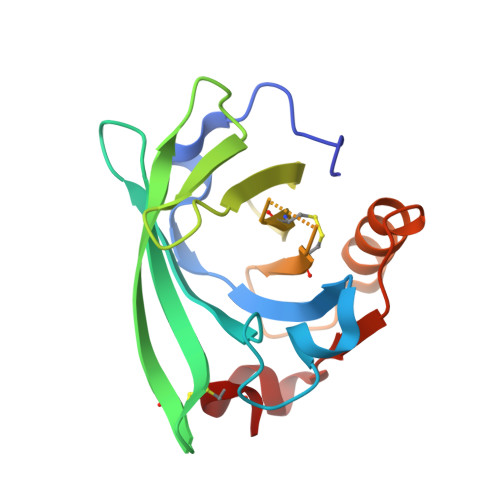Energetic and structural effects of the Tanford transition on ligand recognition of bovine beta-lactoglobulin.
Labra-Nunez, A., Cofas-Vargas, L.F., Gutierrez-Magdaleno, G., Gomez-Velasco, H., Rodriguez-Hernandez, A., Rodriguez-Romero, A., Garcia-Hernandez, E.(2021) Arch Biochem Biophys 699: 108750-108750
- PubMed: 33421379
- DOI: https://doi.org/10.1016/j.abb.2020.108750
- Primary Citation of Related Structures:
7KOT, 7KP5 - PubMed Abstract:
Bovine β-lactoglobulin, an abundant protein in whey, is a promising nanocarrier for peroral administration of drug-like hydrophobic molecules, a process that involves transit through the different acidic conditions of the human digestive tract. Among the several pH-induced conformational rearrangements that this lipocalin undergoes, the Tanford transition is particularly relevant. This transition, which occurs with a midpoint around neutral pH, involves a conformational change of the E-F loop that regulates accessibility to the primary binding site. The effect of this transition on the ligand binding properties of this protein has scarcely been explored. In this study, we carried out an energetic and structural characterization of β-lactoglobulin molecular recognition at pH values above and below the zone in which the Tanford transition occurs. The combined analysis of crystallographic, calorimetric, and molecular dynamics data sheds new light on the interplay between self-association, ligand binding, and the Tanford pre- and post-transition conformational states, revealing novel aspects underlying the molecular recognition mechanism of this enigmatic lipocalin.
- Universidad Nacional Autónoma de México, Instituto de Química, Ciudad Universitaria, Ciudad de México, 04510, Mexico.
Organizational Affiliation:

















